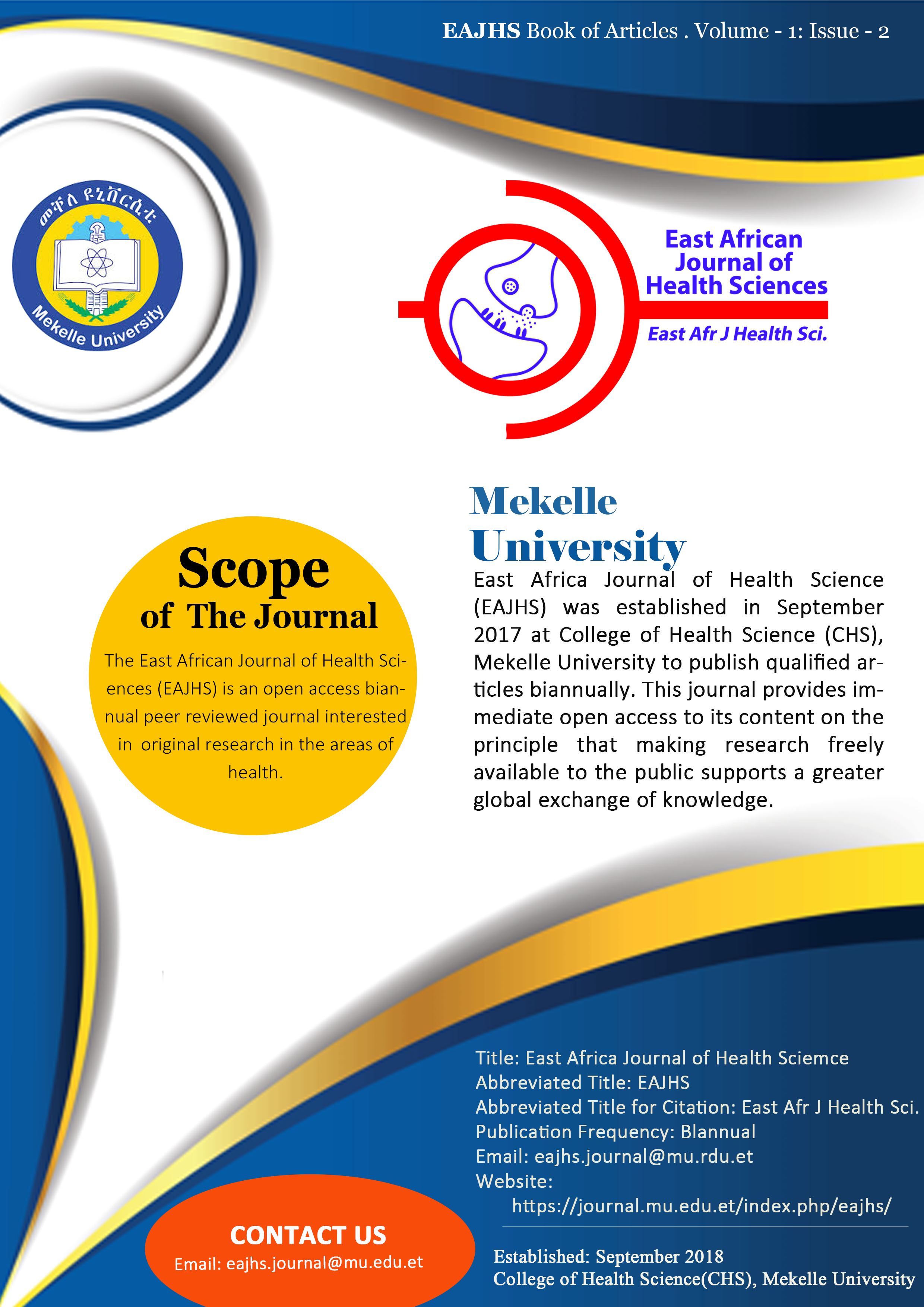Prevalence and factors associated with post-traumatic stress disorder among military personnel admitted to Armed Forces Referral and Teaching Hospital, Addis Ababa, Ethiopia: Cross-sectional study
DOI:
https://doi.org/10.71624/epzkk729Keywords:
Prevalence, post-traumatic stress disorder, military, EthiopiaAbstract
Background: Chronic psychiatric illness such as post-traumatic stress disorder is a major public health problem among military service members, who served in combat. Post-traumatic stress disorder presents an excessive health and economic burden on patients, families, and society as a whole.
Objective: The aim of this study was to assess the prevalence and factors associated with post-traumatic stress disorder among military personnel admitted to Armed Forces Referral and Teaching Hospital, Addis Ababa, Ethiopia.
Methods: Facility based cross-sectional study among active military personnel was employed. The stratified sampling method was used to select 422 participants. Stratified sampling technique was employed to recruit the study participants from the outpatient units using proportional allocation. Data were collected by face to face interview using the Amharic version of post-traumatic stress checklist-military version (PCL-M). The collected data were coded and entered into Epi-data 3.1 and analyzed using SPSS version 20. Bivariate and multivariate analysis was performed to look at an association. The strength of association was interpreted using the odds ratio and 95% confidence interval at P-value < 0.05 level of significance.
Result: A total of 406 respondents participated with a response rate of 95.9%. The prevalence of post-traumatic stress disorder was 15.5%. None officers [AOR=2.97; 95%CI :1.27-6.92], length of service ≥10 years [AOR=0.31; 95%CI: 0.12-0.75], perceived threat to life [AOR=6.67; 95%CI: 2.74-16.22], handling dead body [AOR=2.49; 95%CI:4.44-5.61], poor relationship with team members [AOR=6.67; 95%CI:2.55-18.54], ever use of khat [AOR=3.62; 95%CI:1.06-12.35], and alcohol intake [AOR=2.72; 95%CI :1.37-5.42] were significantly associated with post traumatic stress disorder among military personnel.
Conclusions: High burden of post-traumatic stress disorder was found. None officers, who serve ≥10 years, perceived a threat to life, handling dead body, poor relationship with team members, ever use of khat and use of alcohol were significantly associated with post-traumatic stress disorder among the militaries.
Downloads
Published
Issue
Section
Categories
License
Copyright (c) 2024 The Author(s)

This work is licensed under a Creative Commons Attribution 4.0 International License.
This journal and its articles are licensed under the Creative Commons Attribution 4.0 International License (CC BY 4.0).


